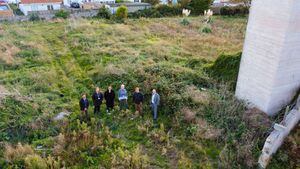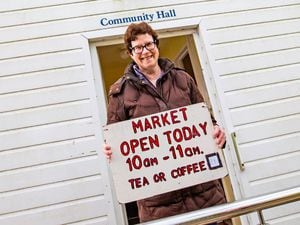New build to feature better tech to help support islanders
Better technology to help people with disabilities will be a feature of the new accommodation due to be built on land at L’Islet, Health & Social Care has said.

La Vieille Plage is the name of the new building, which will accommodate 14 people with varying degrees of learning and physical disabilities.
The facility is expected to be completed by mid-2025.
‘It’s been a long time getting to this point, but we’re really pleased to see work starting on this site as it will make a real difference to the lives of those who will live there in the future,’ said Employment & Social Security president Peter Roffey.
This is a joint initiative with the Guernsey Housing Association and these, said a Health and Social Care spokeswoman, ‘enable high-quality facilities to be delivered in a cost-effective way, and service provision to be uncoupled from building management’.
While homes can be retro-fitted with the equipment that can help people with complex needs – such as at Le Vieux Jardin autism hub – it was far more effective if they are purpose-built, she said.
Many of the new building’s residents will be people who used to live in Sunnybrook in the Castel but who moved to a ward at the Duchess of Kent House in 2016.
‘Less than ideal’ was how Deputy Roffey described their situation.
‘Our existing residential buildings are adequate yet dated, and in the last decade there have been great advances in design and technology to improve homes for people with disabilities,’ said HSC’s spokeswoman.
Among the features of the new build will be facilities to aid the mobility and activities of daily living which will provide better experiences for the residents, such as wider doors, special radiators which can be ceiling mounted and others which are cold to the touch, taps which restrict temperature to avoid them getting too hot, rising work tops to assist wheelchair users with kitchen activities, and door sensors to enable key-less access to private units.
There will also be ceiling track hoists in pre-planned locations which aid transfers for people with mobility issues.
These are more comfortable for users and easier and safer for staff to operate, compared to manual hoists which are currently in use in some existing homes.
While it was possible to retrofit these and other things like specialist baths in existing buildings, it was a complex process, particularly with some older buildings of solid construction, such as the former Duchess of Kent Home.
‘Additionally advances in infrastructure and technology require substantive cabling, which again, while possible to retrofit, is far easier, more cost-effective and less disruptive to install at the point of construction.’
There will also be other ‘tweaks’ improving on traditional construction which will benefit people for whom La Vieille Plage will become home.
‘We are keen to bring our residential homes up to modern standards through renovation and/or construction of new sites, and ultimately for all HSC specialist residential service users to live in an environment that enhances their quality of life, both physically and socially,’ she said.
While Sunnybrook residents will be a priority, it was too early to say who else might be moving to the new development. This would be based upon individual assessments of service users living in existing HSC properties.
‘All people’s needs and mobility levels evolve over time and our service users are no different.’





